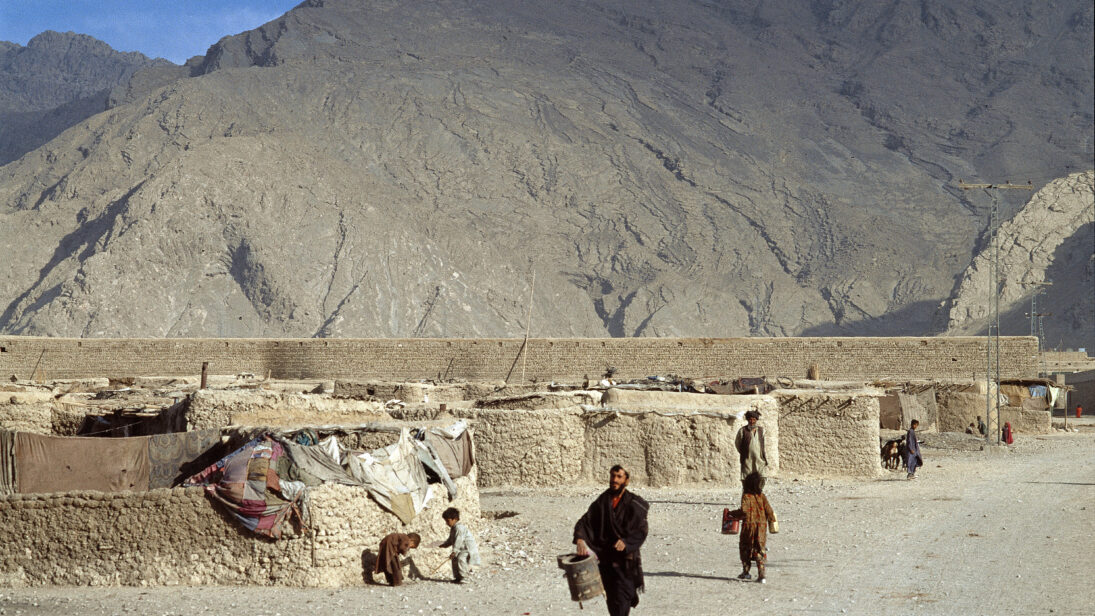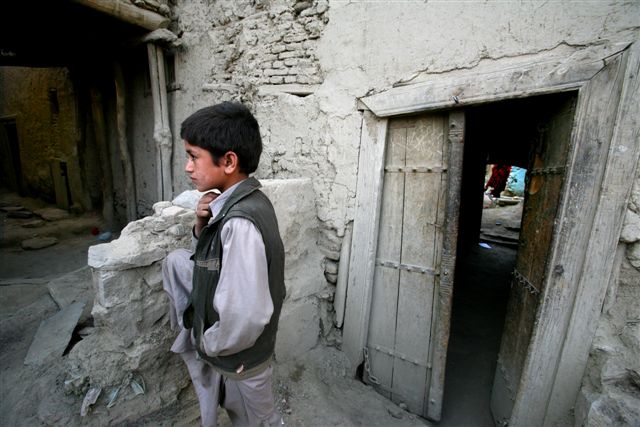
August 2022 marked the 75th anniversary of the 1947 Partition of the Indian subcontinent. With the displacement of millions through divisions along religious lines and the creation of new borders and independent nations, Partition has left a legacy that echoes today across India, Pakistan, and Bangladesh. One aspect of this discussion that many have perennially overlooked is the legacy that Partition left for Pakistan and Afghanistan’s Pashtun population.
For Pakistan’s Pashtun population, Partition was about more than just the new border on the East but also the status of the boundaries on the West. Partition meant that Afghanistan and the newly formed Pakistan inherited the Durand Line, which has had a lasting impact for Pashtuns. While the Durand Line existed prior to the Partition of the subcontinent in 1947, the creation of Pakistan added new dimensions to this dispute, where the newly formed state of Pakistan adopted a hardline approach toward the Durand Line, which it considers a legitimate, international border. However, Pakistan’s strategy has added to hostilities between Afghanistan and Pakistan. As Pakistan moves to add fencing along the Durand Line, deadly border skirmishes, clashes between Pakistan’s armed forces, militant groups, and regular border closures have driven a wedge between families on either side of the border. As a result, Pakistan’s Pashtun population has been caught in these hardening of borders and security tensions.
The Durand Line and Pashtun Fears in 1947
In British India, the colonial government strategically used Pashtun populations to strengthen its control over northern India and safeguard its interests from Tsarist Russia. In 1893, the King of Afghanistan, Emir Abdur Rahman, and the British Foreign Secretary, Sir Mortimer Durand, agreed to the Durand Line through a treaty, which was vehemently protested by local tribesmen. With the treaty, the British agreed to pay 60,000 pounds annually to the Afghan monarch in exchange for the loss of 40,000 square miles of territory. Britain also agreed to come to the aid of the Afghan sovereign in the event of an invasion by an invading army, and Afghanistan became an effective buffer zone between Tsarist Russia and British India.
As Pakistan moves to add fencing along the Durand Line, deadly border skirmishes, clashes between Pakistan’s armed forces, militant groups, and regular border closures have driven a wedge between families on either side of the border.
The legacies of the Durand Line, which had been re-ratified on several occasions between British India and Afghanistan, drove Pashtuns’ fears about an independent Pakistan. As the plan to partition India was based primarily on religion, ignoring cultural and linguistic factors, the Pashtun nationalist leadership of India considered such a partition destructive for the Pashtuns and opposed the Muslim League Partition plan. Khan Abdul Ghaffar Khan—famously known as Bacha Khan and founder of a non-violent resistance movement that aimed to unite Pashtuns against British India—was aware of this and opposed the British proposed partition plan that divided India along religious lines. Instead, he advocated a separate nation-state for the Pashtuns. However, the former Northwestern Frontier Province (NWFP) — now renamed Khyber Pakhtunkhwa — was ultimately incorporated into Pakistan through a referendum.
The British had considered the Pashtuns of the NWFP as a nuisance, and Pakistan adopted this mindset. Soon after Partition, Pakistan started treating the Pashtuns differently from its other citizens, stereotyping Pashtuns as being rebellious in nature and, hence, justifying discriminatory practices. Moreover—as was the case with the British concerned with Russian expansion—the Pashtun-dominated areas of the former NWFP came in as a buffer for Pakistan against Afghanistan on which it has been capitalizing since the Partition.
Pakistan-Afghanistan Tensions since Partition
With the British exit from the subcontinent, the Durand Line stayed in place and succeeded in dividing the Pashtuns for the decades after. Pakistan views the Durand Line as a permanent borderline, citing the re-ratification in 1919 in Rawalpindi after the Anglo-Afghan wars and other treaties before the British exit from the subcontinent, while Afghanistan refuses to recognize the Line as an international border.
When the British left India and Pakistan came into existence, Afghanistan, which had formerly agreed to Durand Line, demanded that the Pashtuns living in Pakistan be given their right to self-determination. Afghanistan additionally ignored the Durand Line and claimed the land between the Indus River and the Durand Line and its parliament openly declared that it did not recognize the Durand Line in 1949. The security policies that Pakistan has had in the decades since Partition have also contributed to the suffering of the Pashtuns on either side of the border.

Soon afterward, Afghan media started provoking the tribal Pashtuns to revolt against Pakistan and demand their rights. Afghanistan meanwhile offered rhetorical support when the Afridis—one of the many Pashtun tribes between Pakistan and Afghanistan—became emboldened and declared independence, which fostered greater strain in Pakistan and Afghanistan throughout the 1950s and 1960s. Meanwhile, the secession of East Pakistan—today’s Bangladesh—remains fresh in Pakistan’s memory. And strong nationalism among Pashtuns and repeated calls for more autonomy further drive fears of territorial loss.
Even though the current Taliban government of Afghanistan – which has not received widespread international recognition – has a relatively stable relationship with the Government of Pakistan, it continues to deny the existence of the Durand Line and Afghanistan’s decades-long support to the various Pashtun nationalist elements of Khyber Pakhtunkhwa summoned the harsh attention of Pakistan.
Moreover, Pakistan has floundered in its policies on the Durand Line: divided between completely fencing the border and dealing with the backlash this inevitably creates from Pashtuns on both sides of the border. With nationalist spirits high on either side of the border, Pakistan cannot afford a mild stance on the border issue. With these fears in mind, Pakistan’s mistrust of the Pashtuns has only grown over the years, convincing it to formulate security policies that have treated Pashtuns through a security-focused lens, creating security tensions domestically and bilaterally with Afghanistan.
The Lasting Legacies
Pashtuns on either side of the border have continued to be embroiled in an environment of instability and underdevelopment. In Pashtun-majority Khyber Pakhtunkhwa, literacy rates have declined in recent years. The province is also facing extensive and costly damages from recent flooding—which is likely to take years to restore, given the federal government’s own economic challenges and its well-known tendency to neglect the province.
To prevent Pashtun youth from joining the militants’ ranks, Pakistan should address their grievances and undertake development projects in Pashtun-populated areas.
Meanwhile, the Durand Line dispute remains increasingly relevant to this day. With the Pakistani Taliban resurgence over the past years, the government of Pakistan began fencing the western border in 2016 to quell the movement of terrorists. During the Ghani administration in Afghanistan, however, the barriers were uprooted by the Afghan National Security Forces soldiers thinking that Pakistan’s move could undermine their long-held treatment of the Durand Line as a porous border.
Conclusively, as Pakistan’s population is bulging rapidly, employment opportunities are shrinking fast. This adversely affects the Pakistani youth, especially Pashtun youth who have access to fewer educational and skill-learning facilities; this forces them to search for other means of earning their livelihoods. To prevent Pashtun youth from joining the militants’ ranks, Pakistan should address their grievances and undertake development projects in Pashtun-populated areas. Where things stand today, the future looks no better for the Pashtuns. The Durand Line continues to remain a clashing point between the two neighbors, with the downstream consequences disproportionately affecting the Pashtun population.
***
Image 1: United Nations via Flickr
Image 2: Foreign, Commonwealth & Development Office via Flickr


